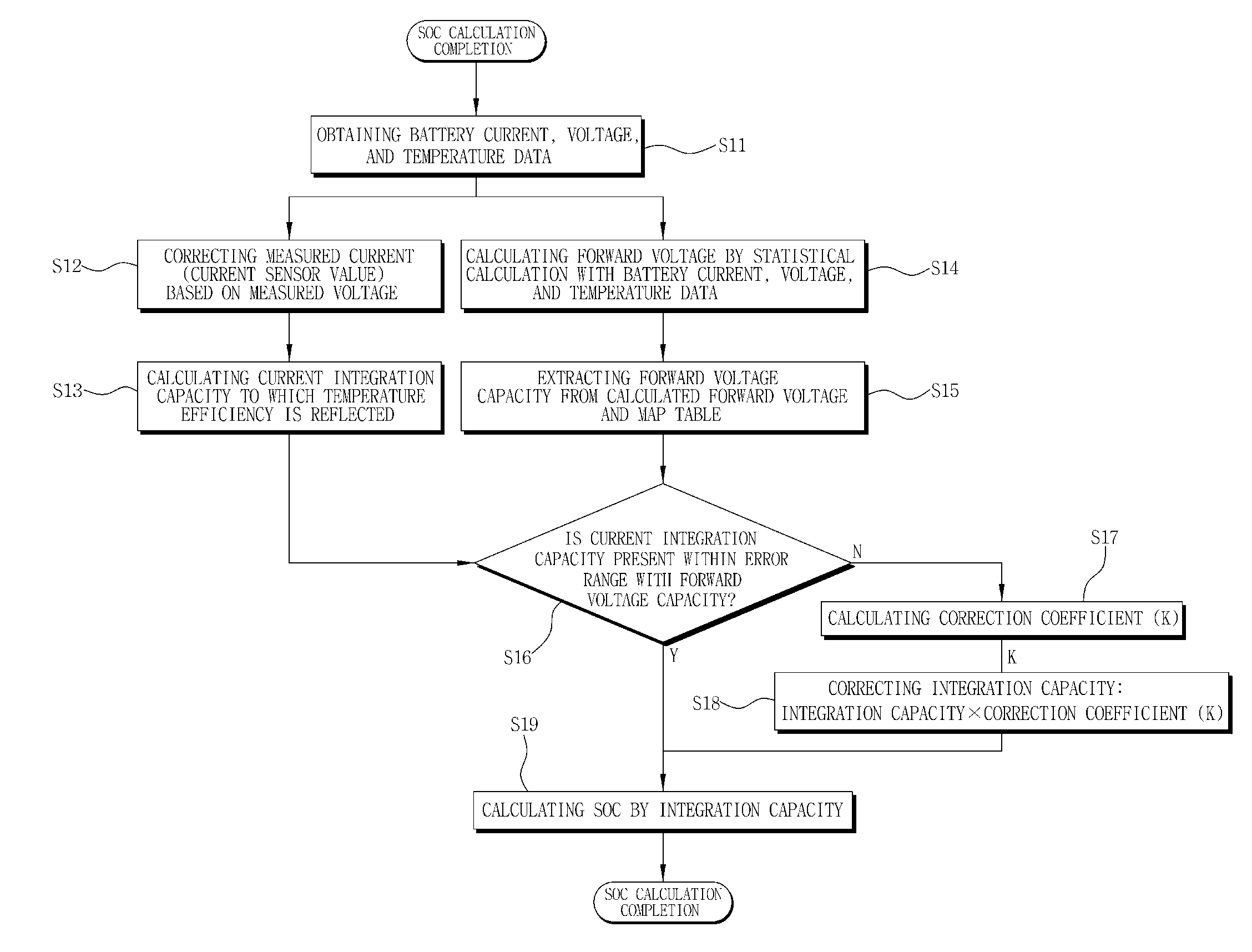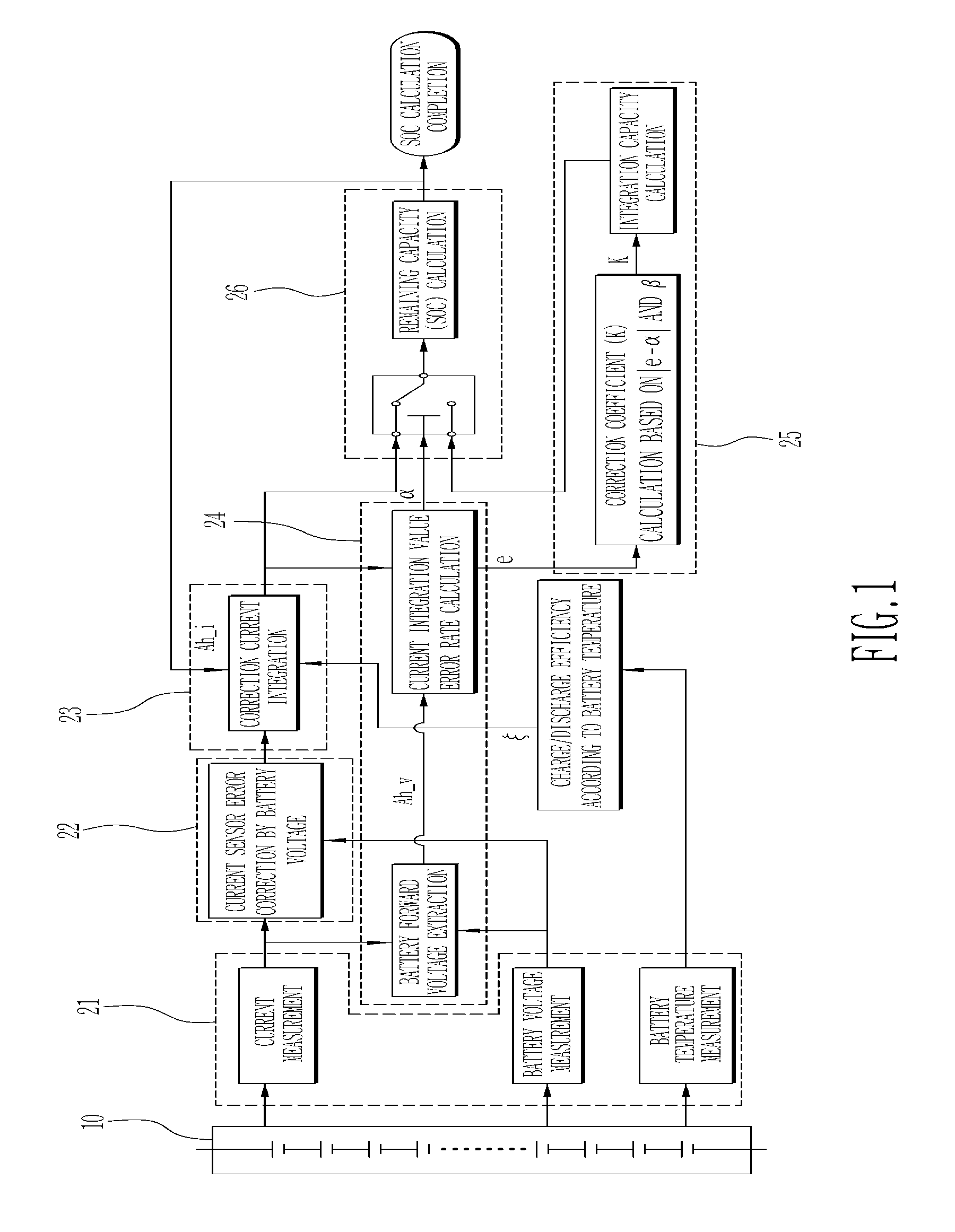Method for estimating remaining capacity of battery
a technology for remaining capacity and battery, applied in the direction of electrochemical generators, instruments, transportation and packaging, etc., can solve the problems of overcharging of batteries, deteriorating vehicle operation efficiency, and dangerous situations
- Summary
- Abstract
- Description
- Claims
- Application Information
AI Technical Summary
Benefits of technology
Problems solved by technology
Method used
Image
Examples
Embodiment Construction
[0030]Reference will now be made in detail to the preferred embodiments of the present invention, examples of which are illustrated in the drawings attached hereinafter, wherein like reference numerals refer to like elements throughout. The embodiments are described below so as to explain the present invention by referring to the figures.
[0031]FIG. 1 is a block diagram showing a process of calculating a remaining capacity of a battery in accordance with the present invention, FIG. 2 a flowchart showing the process of calculating a remaining capacity of a battery in accordance with the present invention, and FIG. 3 is a block diagram showing a process of correcting a current integration capacity in the process of calculating a remaining capacity of a battery in accordance with the present invention.
[0032]As shown in the figures, the method for calculating a remaining capacity of a battery includes a process of obtaining information about the status of a battery 10 (S11), in which a c...
PUM
 Login to View More
Login to View More Abstract
Description
Claims
Application Information
 Login to View More
Login to View More - R&D
- Intellectual Property
- Life Sciences
- Materials
- Tech Scout
- Unparalleled Data Quality
- Higher Quality Content
- 60% Fewer Hallucinations
Browse by: Latest US Patents, China's latest patents, Technical Efficacy Thesaurus, Application Domain, Technology Topic, Popular Technical Reports.
© 2025 PatSnap. All rights reserved.Legal|Privacy policy|Modern Slavery Act Transparency Statement|Sitemap|About US| Contact US: help@patsnap.com



